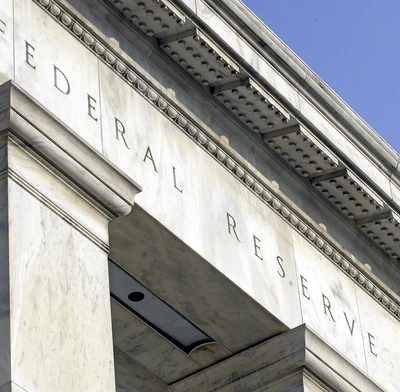The US Federal Reserve held its key interest rate steady at 4.25%-4.5% for the third time in a row and signaled heightened economic uncertainty.
Federal Reserve Maintains Rates Amid Growing Economic Uncertainty

In a statement released in the US afternoon of 7 May, the Fed acknowledged “uncertainty about the economic outlook has increased further,” noting that “the risks of higher unemployment and higher inflation have risen”.
The decision was widely anticipated by markets, which showed muted reactions across asset classes. Bitcoin briefly declined 1.2% to below $96,000 immediately following the announcement before recovering in subsequent hours as investors digested Fed Chair Jerome Powell's accompanying remarks. US Treasuries, equities, and the dollar similarly exhibited subdued responses to the news.
Mixed picture
The Fed's cautious stance reflects ongoing concerns about the Trump administration's trade policies, as new import tariffs threaten to fuel inflation while potentially constraining economic growth. Powell and his colleagues have adopted a "wait-and-see" approach as the White House pursues what it calls necessary disruptions to world trade patterns.
Powell gave a mixed picture during his press conference. “The economy itself is still in solid shape” he emphasized, though he noted that conflicting signals around growth, consumer prices and sentiment have complicated the Fed's assessment.
US GDP (gross domestic product) fell 0.3% at the start of 2025 as merchants prepared for the impact of new tariffs on the movement of goods. However, April's employment report exceeded expectations with 177,000 nonfarm payroll additions, while unemployment remained low at 4.2%. However, inflation continues to run above the Fed's 2% target. Some economists are now expecting the Fed to keep rates as they are until as late as September.
"It's a little confusing"
Tariff impact
While the Fed acknowledged that swings in net exports have influenced economic data, Powell navigated the topic of tariffs reservedly in answering questions from reporters:
“It’s a little confusing and it’s probably less confusing to us than it would be to the general public as we try to explain this. You know, it’s complicated…”
The Fed’s funds rate is followed by banks for overnight lending and its decisions feed into calculations for consumer credit such as the cost to borrow for property and credit cards. Its communications continue to play a crucial role in shaping economic expectations and market sentiment across asset classes.







